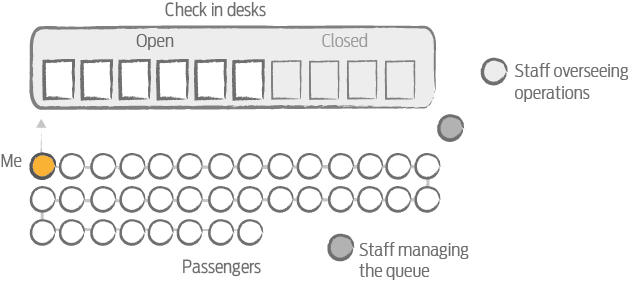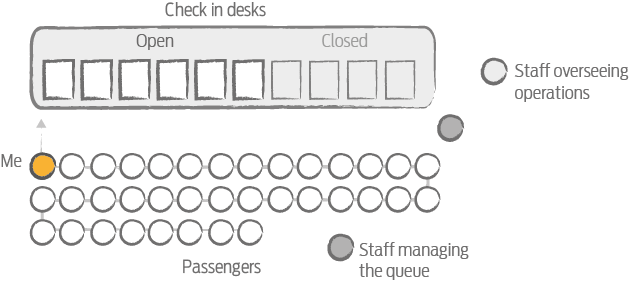The impact of "undesigned" service experiences

Organisations that otherwise pride themselves in delivering exceptional customer experiences, can be myopic to the design of less tangible aspects of their services. Although invisible to the organisation, these can be very visible to customers and have a dramatic impact on their overall experience.
An undesigned check-in process
Air New Zealand is one of the world’s leading airlines. They pride themselves on the quality of their customer experience, as exemplified by the number of times they mention the awards they have won during a three hour flight from Sydney to Auckland (if you’re interested, here's a summary of their recent awards, it makes quite impressive reading).
Yet the check in process at Sydney Airport not only delivers a poor customer experience, but it actively encourages bad customer behaviour and discourages good customer behaviour. Surely this can’t be by design.
Three into one doesn’t always go
Simplicity suggests that having one queue beats managing multiple lines, but tinker with the first come, first served basis that underpins a single queue just a little and it very quickly breaks down. At Sydney Airport, Air New Zealand has a single queue for multiple flights taking off over up to a three hour time difference. This means that whenever you arrive there is nearly always a reasonably long queue, even if (like me) you have a proclivity for arriving three hours before your flight.
This is not only immediately discouraging and a bad way to start the travel experience (no one likes queuing), but it also carries the side effect that they frequently need to promote individuals who turn up late for flights in front of people who have arrived early for their flight. And as a consequence they need to employ people to manage the queue and promote the late-comers.
On my most recent flight, they point blank refused to check me in even though I had worked my way to the front of the queue until all the more urgent customers had been checked in.
Even though I was at the front of the queue, I ended up getting served after all of these people
Experience isn’t just about numbers
It is understandable why such a process may appear to make sense for an airline. They evaluate the success of the check-in procedure by metrics such as on-time departures and on-time arrivals. Is the check-in process efficient? Possibly. Does it provide a good customer experience? Definitely not!
None of the metrics they value are affected by giving an early bird like me a bad experience. Yet once inside a plane, they have spent a lot of effort designing a high quality customer experience.
Look again at the check-in queue from a behavioural perspective. They are training customers that there is no benefit in turning up early, in fact worse, the only way to minimise queuing time (which is almost certainly the number one objective for travellers) is to turn up later and later. The problem will only get worse and worse over time as more of their customers realise that arriving late offers them the best experience.
Now contrast this with the experience offered by Singapore Airlines. Arriving at London Heathrow a similar amount of time in advance of an international flight, there was a dedicated check-in queue for my flight. This meant I was rewarded for turning up early by experiencing no queuing time.
Given that Sydney Airport is a hub for Air New Zealand flights, dedicated check-in desks for each flight may not be a feasible business option. I am going to avoid getting into solution mode right here, but I believe a single queue variant that encourages “good” customer behaviour is easily attainable.
Design services not artifacts
Designing great experiences requires an organisation to design not just a series of artifacts (boarding passes, in-flight entertainment systems), but also to design the things that go on in between those interactions. Only by taking a holistic service design approach can an organisation identify and design consistently good end-to-end experiences.
Rectifying problems like Air New Zealand's check-in queue isn’t difficult, the solution isn’t brain science, but the real issue is that organisations need to apply a broader lens to the design of end-to-end experiences. Undesigned experiences are not at all uncommon, most organisations have them and, if they address them at all, they do so in costly ways that only treat the symptoms rather than address the underlying problem.
In many cases, an organisation can't identify these "undesigned" experiences without a little help - and that's where we come in.

